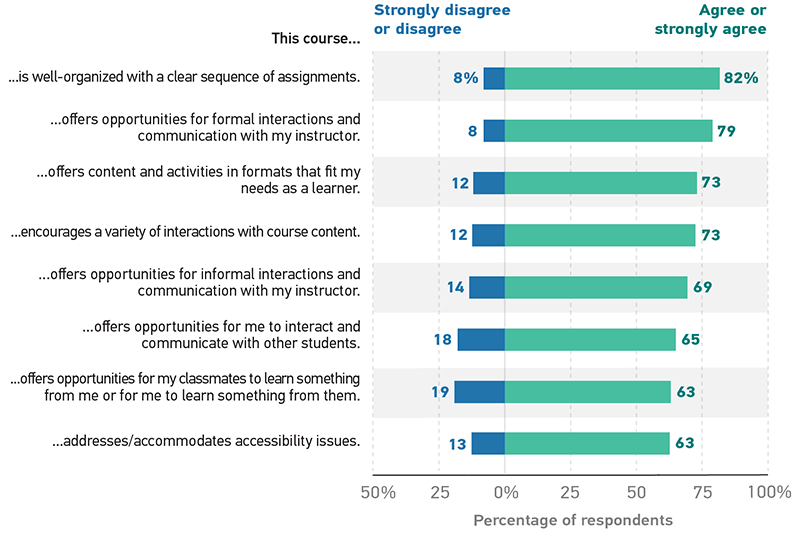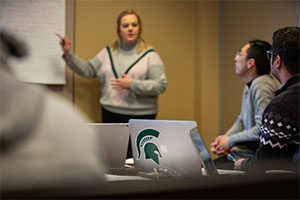Course Organization and Design

Significant learning experiences start with an organized course designed to create opportunities for students and instructors to interact with each other. Because course organization and design shapes students' learning experiences and their opportunities to interact with their instructors and one another, we asked students to rate eight design features of the courses in which they were learning the most (figure 3). For the three items directly related to course organization and design, a majority of students reported that the courses they took during the pandemic were well-organized (82%), offered a variety of interactions with course content (73%), and addressed accessibility issues (63%). Furthermore, students rated highly courses that created robust social contexts that included opportunities for students to interact formally and informally with their instructors, to interact with other students, and to learn from and teach other students.1 Course modality is a factor that shapes students' evaluations of course organization and design. Synchronous courses tended to be rated as better organized with greater opportunities for student–instructor and student–student interaction; similarly to instructor evaluations, these differences were small (generally 5 percentage points or less), though opportunities for formal interactions and communication with instructors had a clear advantage among students in synchronous courses (83%) over those in asynchronous courses (73%).
Peers You Can Connect With

Supporting Student-Centered Pedagogy in a Time of Crisis
Michigan State University
When COVID-19 hit, the Enhanced Digital Learning Initiative (EDLI) team at Michigan State University grew from efforts developing workshops to support the rapid conversion of all MSU classes to online delivery. EDLI works with faculty members to help them leverage both scholarly literature and their own values to improve the student learning experience. Institutional student surveys give credence to EDLI's efforts to humanize the digital teaching landscape, as students clearly indicated that myriad outside factors—environmental, physical, psychological, technical, and logistical—negatively affected their ability to focus on their coursework during the pandemic. EDLI is carrying forward the credo of generosity, flexibility, and transparency as it pursues value-centered faculty pedagogical support and targeted research on the effectiveness of new multimodal, digitally enhanced learning environments designed to help educate the Whole Spartan.
Photo: Zach Hall, Video Producer, Broad College of Business
Note
-
For more lessons learned about how students engaged with their instructors and one another during the pandemic, see Edward J. Glantz, Chris Gamrat, Lisa Lenze, and Jeffrey Bardzell, "Improved Student Engagement in Higher Education's Next Normal," EDUCAUSE Review, March 16, 2021.
↩︎